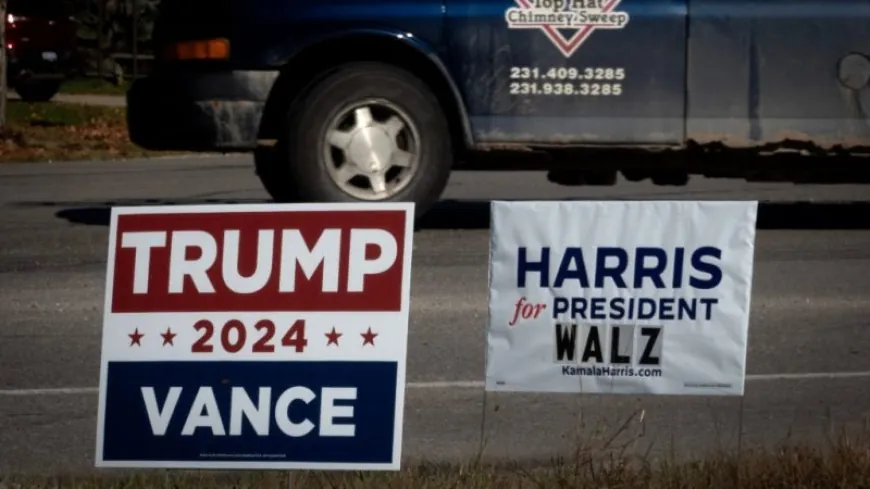A tie in the Electoral College could have this unprecedented outcome

(NEXSTAR) – A tie in the Electoral College, while very unlikely, is still very much possible thanks to the even number of electoral votes (538) up for grabs in the upcoming presidential election.
If neither candidate obtains the 270 votes needed to win — i.e., each candidate gets 269 votes apiece — then the elected members of Congress would decide the winner of the presidency and vice presidency in what’s called a contingent election.
That process, in and of itself, would be “disruptive” and “problematic,” Derek Muller, a law professor at the University of Notre Dame, previously told The Hill. But it could also result in a scenario that the American public hasn’t seen in over 200 years.
In a contingent election, the House of Representatives would meet to determine the president, with each state’s delegation allowed to cast one vote for the candidate of their choice. (Washington, D.C. would not participate.) The first candidate to receive 26 votes would then become president.
But the Senate would be tasked with electing the vice president, with each Senator allowed to cast a single vote. (Again, D.C. would not participate in contingent elections.) The first candidate with 51 votes is then declared the winner.
In a contingent election, therefore, it’s possible that the House selects a president from the majority’s preferred party, while the Senate chooses a vice president from the other. Such a scenario would be more likely if the House and Senate are controlled by different parties after the election.
For example, a tie in the electoral college after the 2024 election could theoretically result in a Trump-Walz administration, if the Republicans and Democrats manage to retain their current majorities in the House and the Senate, respectively.

Signs showing support for both Democratic presidential candidate Vice President Kamala Harris and Republican presidential candidate former President Donald Trump sit along a rural highway on September 26, 2024 near Traverse City, Michigan. (Scott Olson/Getty Images)
Corey Brettschneider, a professor of political science at Brown University and the author of “The Presidents and the People: Five Leaders Who Threatened Democracy and the Citizens Who Fought to Defend It,” believes the chance of this happening in 2024 is “low.” But that's largely because he believes there are “vulnerabilities” in the Electoral College system that could allow one candidate — Trump, he named specifically — to unethically manipulate the electoral votes before a contingent election would ever need to take place.
“The system as a whole is very precarious,” Brettschneider said. “It’s not as stable as it should be.”
If indeed a contingent election were held, and a president and vice president from different parties were chosen to serve in the same administration, there would be constant “undermining” of the other’s objectives, Brettschneider believes.
The last time that two politicians from different political parties somewhat reluctantly served in the same administration was between 1797-1801, when President John Adams (a Federalist) and Vice President Thomas Jefferson (a Democratic-Republican) held the offices.
“[With] the Adams Administration, you had a president who was intent in shutting down the opposition, and a vice president who was the leader of that opposition,” said Brettschneider, adding that the administration was “a microcosm of the instability of the country as a whole.”
But Adams and Jefferson didn’t end up together because of a contingent election: At the time, the candidate with the most electoral votes became president, and the runner-up became vice president. The 12th Amendment, ratified in 1804, aimed to prevent this by overhauling the process to create a distinction between votes for the offices of president and vice president.
There’s still nothing in the Constitution that would forbid a two-party presidential ticket. Abraham Lincoln and Andrew Johnson had belonged to different parties (Republican and Democratic) before they successfully ran for the nation’s highest offices in 1864 — though, technically, they had both aligned prior to the election under the newly created National Union party.
Sen. John McCain (R-Ariz.) had also revealed in his 2018 memoir that he nearly selected Sen. Joe Lieberman (D-Conn.) as his running mate in the 2008 election, and even expressed regret that he hadn’t. McCain’s advisers, he said, steered him toward Republican Alaska Gov. Sarah Palin, fearing that Lieberman’s pro-choice stance on abortion would hurt his chances.
“It was sound advice that I could reason for myself,” McCain wrote. “But my gut told me to ignore it and I wish I had.”
But even a potential McCain-Lieberman ticket would have been spearheaded by politicians who willingly chose to be running mates. A Trump-Walz administration, on the other hand, would not be built on as stable a foundation — and could result in both men trying to undermine each other, or oust the other from power.
“I don’t see it as a good thing,” said Brettschneider. “I don’t see a world where this is a good thing for American democracy.”

 VENN
VENN 





